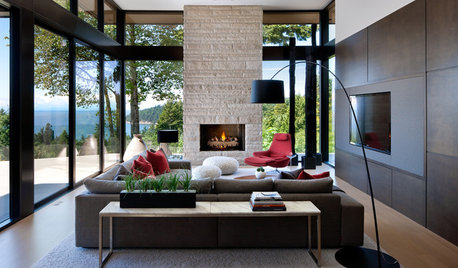service entrance 100amp to 200 code questions
nogreenthumbs
10 years ago
Related Stories

REMODELING GUIDESConsidering a Fixer-Upper? 15 Questions to Ask First
Learn about the hidden costs and treasures of older homes to avoid budget surprises and accidentally tossing valuable features
Full Story
DOORS5 Questions to Ask Before Installing a Barn Door
Find out whether that barn door you love is the right solution for your space
Full Story
MOVINGHiring a Home Inspector? Ask These 10 Questions
How to make sure the pro who performs your home inspection is properly qualified and insured, so you can protect your big investment
Full Story
WORKING WITH PROS9 Questions to Ask a Home Remodeler Before You Meet
Save time and effort by ruling out deal breakers with your contractor before an in-person session
Full Story
CONTRACTOR TIPSBuilding Permits: 10 Critical Code Requirements for Every Project
In Part 3 of our series examining the building permit process, we highlight 10 code requirements you should never ignore
Full Story
MOST POPULAR8 Questions to Ask Yourself Before Meeting With Your Designer
Thinking in advance about how you use your space will get your first design consultation off to its best start
Full Story
KITCHEN DESIGN9 Questions to Ask When Planning a Kitchen Pantry
Avoid blunders and get the storage space and layout you need by asking these questions before you begin
Full Story
WORKING WITH PROS12 Questions Your Interior Designer Should Ask You
The best decorators aren’t dictators — and they’re not mind readers either. To understand your tastes, they need this essential info
Full Story
ORGANIZING4 Questions to Help You Organize Your Favorite Photos
Organize your keeper photos with a system that's just right for you, whether it's in the cloud or you can hold it in your hand
Full Story
WORKING WITH PROS10 Questions to Ask Potential Contractors
Ensure the right fit by interviewing general contractors about topics that go beyond the basics
Full StoryMore Discussions









hendricus
bus_driver
Related Professionals
Alhambra General Contractors · Casas Adobes General Contractors · Erlanger General Contractors · Leon Valley General Contractors · Palatine General Contractors · Port Huron General Contractors · Riverside General Contractors · Saginaw General Contractors · Sauk Village General Contractors · Austintown General Contractors · Elizabeth Solar Energy Systems · Voorhees Solar Energy Systems · Hacienda Heights Home Automation & Home Media · Oak Hill Home Automation & Home Media · Weston Home Automation & Home MedianogreenthumbsOriginal Author
mm11
Ron Natalie
nogreenthumbsOriginal Author
mm11
Ron Natalie
mm11
Ron Natalie
nogreenthumbsOriginal Author
nogreenthumbsOriginal Author
nogreenthumbsOriginal Author
Ron Natalie
nogreenthumbsOriginal Author
Ron Natalie
zootjeff
dave
Ron Natalie
dave
Harolds Electric Co.